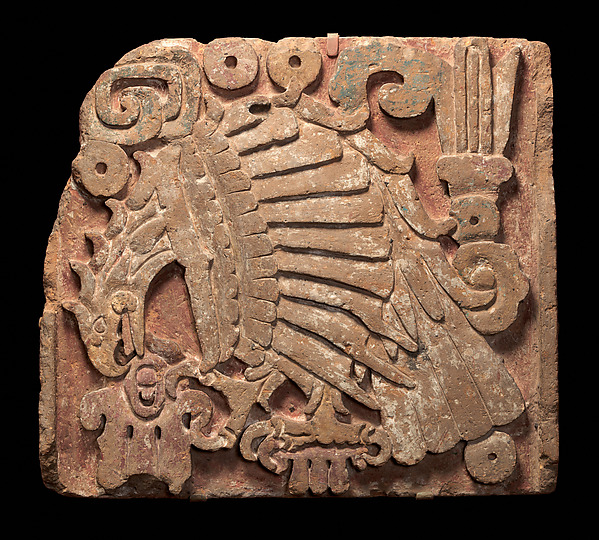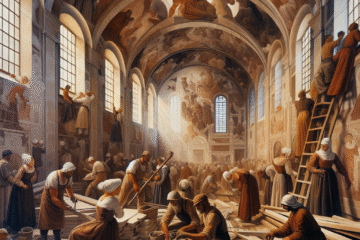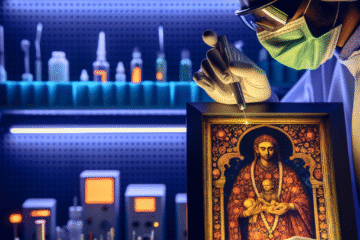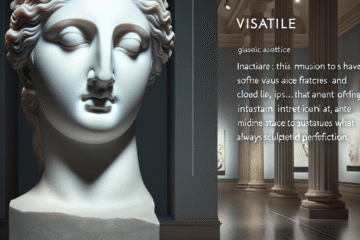
Image title: Eagle relief
Medium: Andesite or dacite, Maya blue, stucco, red pigment
Date: 900–1200 CE
Source:
The Met Collection
“
The sum of wisdom is that time is never lost that is devoted to work.
”
— Ralph Waldo Emerson
Maya Blue and Other Sacred Colors Lost to Time
Introduction: The Mystery in the Hue
The story of ancient art is not just carved in stone or painted on walls—it’s also baked into the pigments, dissolved in dyes, and suspended in glazes whose secrets disappeared for centuries. Among the most enigmatic is Maya Blue—a radiant turquoise pigment that remained astonishingly stable over time, resisting acid, harsh weather, and even the ravages of centuries. Alongside it, Egyptian purple and Chinese Han blue evoke a synesthetic mystery, combining chemistry, color, and spirituality. These pigments were not only visual elements but sacred materials, developed in highly specific contexts and once lost to history. In recent decades, the rediscovery of these pigments has opened new windows into ancient technology, craft, and meaning, rewriting material art history from a molecular level upward.
Chapter I: Maya Blue – A Sacred Mesoamerican Revelation
Maya Blue is not just a color but a triumph of ancient Mesoamerican science and ritual. Discovered in murals, pottery, and on statues dating as far back as 800 AD, the pigment’s chemical resilience baffled scientists for years. Its radiance comes from a unique combination: natural indigo dye mixed with a clay mineral called palygorskite, heated to form a bond that resists degradation. The Maya used it not just for decoration but in sacred rituals, including human sacrifices to the rain god Chaac, where victims were painted in blue as offerings. The rediscovery of its formula in the late 20th century involved chemists, archaeologists, and material scientists, all collaborating to unlock an ancient alchemy. In this color, we see how indigenous knowledge, environmental sensitivity, and spiritual belief merged into chemical ingenuity that challenges modern understandings of technology.
Chapter II: Egyptian Purple – Tyrian Opulence and Political Authority
The Egyptians didn’t invent purple, but they integrated color into a broader philosophy of ma’at, or cosmic order. Purple’s associations with royalty existed in the Nile Valley long before the famed Tyrian purple of the Phoenicians. The Egyptians developed pigments from crushed shells and minerals, creating hues that symbolized divine status and immortality. Egyptian purple was not merely aesthetic but a socio-political tool, used sparingly on sarcophagi, ceremonial items, and frescoes. Recent spectral imaging of ancient tombs has revealed pigments long invisible to the eye, including purples thought lost. These indicate that color itself was a conscious structure of meaning—while rediscovery is helping historians reinterpret the symbolic language of the ancient world.
Chapter III: Han Blue – The Lost Technology of the Celestial Empire
Across the globe in ancient China, the Han dynasty was producing another lost blue—Han blue—between the 3rd century BCE and the 3rd century CE. A synthetic pigment made by heating barium copper silicate, Han blue was used in wall paintings, decorative tiles, and funerary objects. It was considered a luxurious and sophisticated technology. Later replaced by other pigments and forgotten for centuries, Han blue’s modern rediscovery involved meticulous analysis with X-ray diffraction and scanning electron microscopy. Notably, its use was linked with Taoist cosmology and temple architecture—blue signifying immortality and the heavens. Here, pigment becomes not just matter but metaphysics, shaping how we view Chinese visual culture not merely as decorative but deeply theological and scientific.
Chapter IV: The Philosophical Meaning of Color
In each civilization that created these sacred pigments, color transcended the visual. It became a system of coded values: spiritual, political, metaphysical. The Greeks philosophized about color through optics, but for the Maya, Egyptians, and Han Chinese, color was less about perception than invocation. Sacred blues and purples weren’t there simply to mimic nature or please the eye, but to conjure, to connect earthly and divine dimensions. This contrasts sharply with later European views, where paint became a tool of illusion and narrative. As art history grows more global and technological, we must understand ancient colors on their own terms—not merely through pigment analysis, but through cultural symbology and belief systems they embodied.
Chapter V: Rediscovery and the Future of Lost Colors
Today, artists and scientists are collaborating as never before to recreate ancient colors—not only for conservation but for inspiration. The reengineering of Maya Blue has led to its use in modern artistic practice, while Han blue’s unique photonic properties are being explored in nanotechnology and optoelectronics. Pigments previously entombed in ritual and myth are now rising into labs and studios, reshaped by a modern alchemical imagination. These sacred colors remind us that art is material, and materials are steeped in history, belief, and innovation. Rediscovering these pigments is not only an act of technical recovery; it is a philosophical reawakening—a return to a time when making color was a sacred act.
Conclusion: Color as Cultural DNA
The resurgence of ancient pigments like Maya Blue, Egyptian purple, and Han blue invites a richer appreciation of the intertwined nature of art, science, and spirituality. These pigments demonstrate that color in antiquity was never accidental—it was chemistry as theology, painting as prayer. As we unlock the mysteries of these lost colors, we’re not merely gleaning ancient knowledge; we’re reconstructing the DNA of human creativity. In each molecule, each mineral, lies the memory of a civilization and its vision of the cosmos. Understanding them makes visible what history almost let fade.



